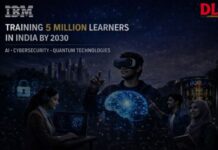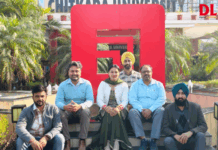
 Major breakthroughs usually happen when what is feasible suddenly meets what is a desperate necessity. We are talking about the Tablet PCs, which have taken the world of education by a storm within a relatively small period of time and we have taken it up as the cover feature for the month
Major breakthroughs usually happen when what is feasible suddenly meets what is a desperate necessity. We are talking about the Tablet PCs, which have taken the world of education by a storm within a relatively small period of time and we have taken it up as the cover feature for the month
One of the first initiatives of the new elected Chief Minister of Uttar Pradesh was to announce free tablets for every student who has completed Class X. Not to be left behind, Goa’s new Chief Minister too announced that all Class V and VI students in the state would be given tablet computers. Ministry of Human Resource Development has also been endorsing the Aakash tablet with an objective to close the digital divide.
Many schools, colleges and universities have begun experimenting with tablet computers and classroom integration initiatives that vary from campus-wide distributions to small-scale, single-class pilots. These programmes are designed to provide evidence of improved student learning and engagement. We have collected the views of all sections of the Tablets space – the hardware makers, the software solution providers and finally the institutes where the systems are actually being deployed.
There is no doubt that the top-quality Tablets based learning platforms could enable budget-strained institutions in the country to bring vibrancy to their classrooms. Teachers and the students will have the ability to download the best lectures, and all kinds of interesting courseware. When you look at magnitude of the problems that we face in the education space, the Tablets seem to be very good news. Of course, lot of work needs to be done to ensure that the quality of hardware is good, and the content is conducive for better learning outcomes.
Despite the bottlenecks arising out of poor infrastructure and traditional mindsets, the impact of the digital learning industry has been rising steadily. In this issue of digitalLEARNING, we have focussed on some of the core areas of education. We have explored ERP in schools and higher education, CCE in schools, STEM education in schools. To bring out the factual position of the industry in each case, we have interacted with a host of stakeholders, who are actively engaged in creating the solutions. We have also collected the views of the institutions where the solutions are being implemented.
There is a need to explore these topics deeper and other fields need to be acknowledged. We look forward to continue these discussions in the World Education Summit, the most prestigious education event, scheduled for 23rd and 24th July, 2012, at Le Méridien, New Delhi, where educators, practitioners, service providers, policy makers from around the world will converge on for two days of knowledge sharing and discussion. The July issue is part of the special series that is focussed on making an in depth analysis of the education space in the country. It gives me great pleasure to invite all of you to be a part of the World Education Summit, where we will be having an invigorating discussion on the best ways of improving educational outcomes in the country. Finally, I would like to thank Professor S S Mantha, Chairman, AICTE, for being the guest editor of the entire series of issues of digitalLEARNING that have been brought up in the run up to the prestigious World Education Summit.
























